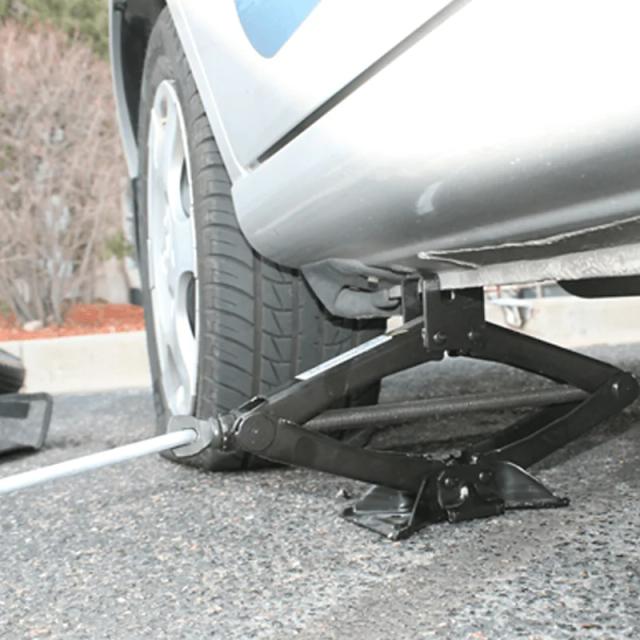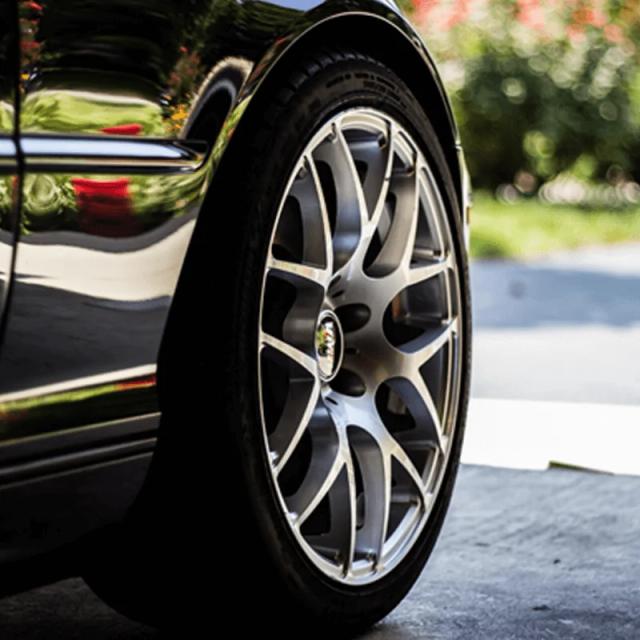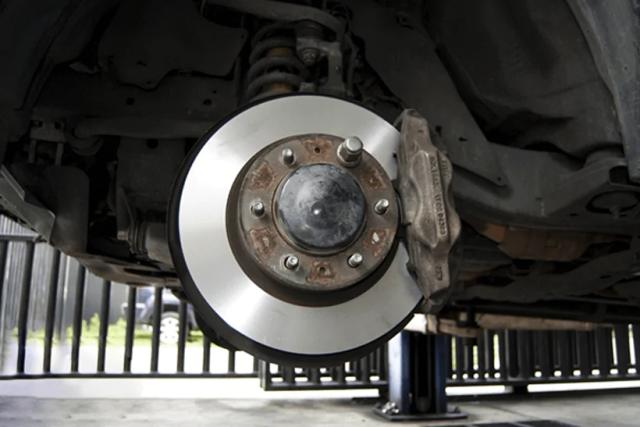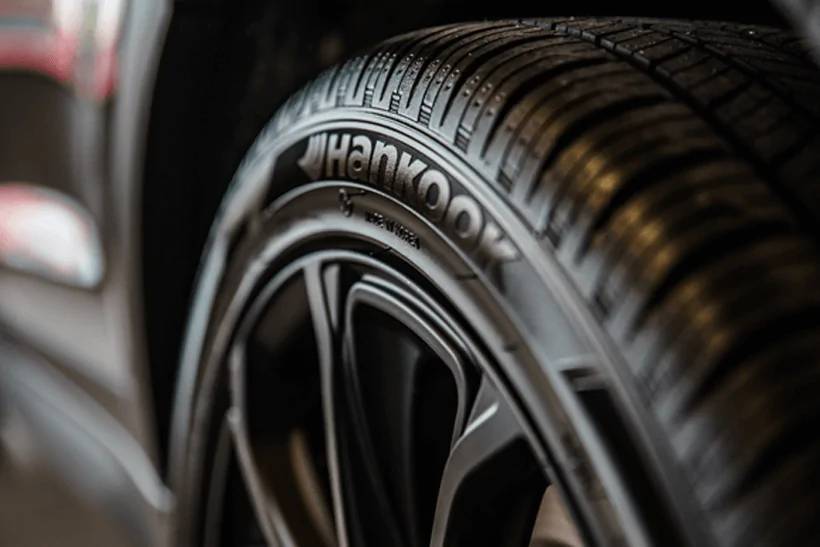
When was the last time you checked your tyre tread depth? If you haven’t checked them since your last service, you should set aside some time to test your tyres as soon as possible. When the tread falls below the legal limit, you could face hefty fines, points on your licence, or — in the worst-case scenario — an accident out on the road. In fact, three quarters of all motorway incidents related to tyre failure could have been prevented with simple checks, according to Highways England.
Checking your tyres is simple and only takes a couple of minutes, and it’s better to be safe than sorry, so there’s really no reason to put it off. In this guide, we’ll teach you how to check tyre tread depth, covering:
The legal tyre tread depth limit
Under UK law, the legal tyre tread depth is 1.6mm across the central three-quarters of the wheel (gov.uk). However, most motoring bodies agree that you should replace the tyres once the tread wears below 2mm.
During the winter, when difficult driving conditions are more likely, you should try to make sure you have a minimum tyre tread depth of 3mm. While this is more than the legal tyre tread depth, it will help your car to handle better in wet weather, snow, and icy conditions, reducing the risk of skidding or aquaplaning.
The risks of driving on illegal or ‘bald’ tyres
The grooves and ridges that run around the surface of the wheel are called the ‘tread’. They’re designed this way to help improve grip and keep your tyre in contact with the road surface. As the tyre wears away over time, the tread is ground down, reducing the grip on the road.
When the tread wears down beneath the legal minimum, it leads to a significant reduction in your car's handling capacity, and increases the risk of skidding, aquaplaning, and losing control of the vehicle. And, when the tyre tread wears down below 3mm, stopping distances also increase dramatically, according to research by MIRA published by RoSPA. You’re also more likely to suffer a flat or burst tyre when your tread is below the legal limit.
Driving below the minimum tyre tread limit can also hurt your wallet. Should you be caught driving on illegal or bald tyres (where the tread is completely worn down) you could face a fine of up to £2500 and three penalty points. And that’s just per single tyre, meaning if you’re found to have four dangerously low tyres, you could face a maximum combined penalty of £10,000.
Worn out tyres can also have another hidden cost. If you’re involved in an accident when driving on illegally worn tyres, then your insurer may refuse to pay out, invalidating your policy and making you financially liable for any damage.
How to check your tyre tread depth
There are few different methods you can use to check the tread depth of your tyres. The simplest option is to use a digital tread depth gauge: simply place the end of the gauge in the tread groove and it will give you an accurate reading. The tread should be at least 1.6mm through the central three-quarters of the wheel, all the way around the tyre.
Nowadays, many tyre manufacturers include treadwear indicators as standard to make checking easier. These are small, raised bumps inside the grooves of the tread which can be used to keep an eye on the tread depth. Once the surface of the tread is at the same level as these, it means it’s nearing the legal limit, and you should book an appointment to get your tyres changed.
The 20p tyre test
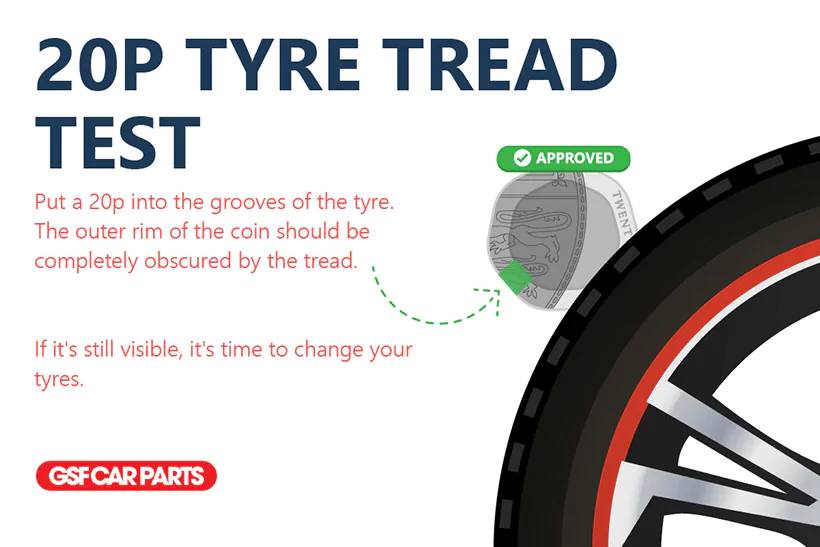
Another simple way to check your tyre tread depth is to use a 20p coin. Place the coin inside the groove and the outer rim of the coin should be completely obscured by the tread. If it’s still visible, then it’s time to get your tyres replaced.
When you measure your tyre tread, don’t forget to check all around the wheel, as it may be more worn down on one side. If your tyre has unevenly worn patches in different places around the wheel, then it could be a sign that your car has a broken tyre strut or coil, so take your car to qualified mechanic.
How often should you measure tyre tread?
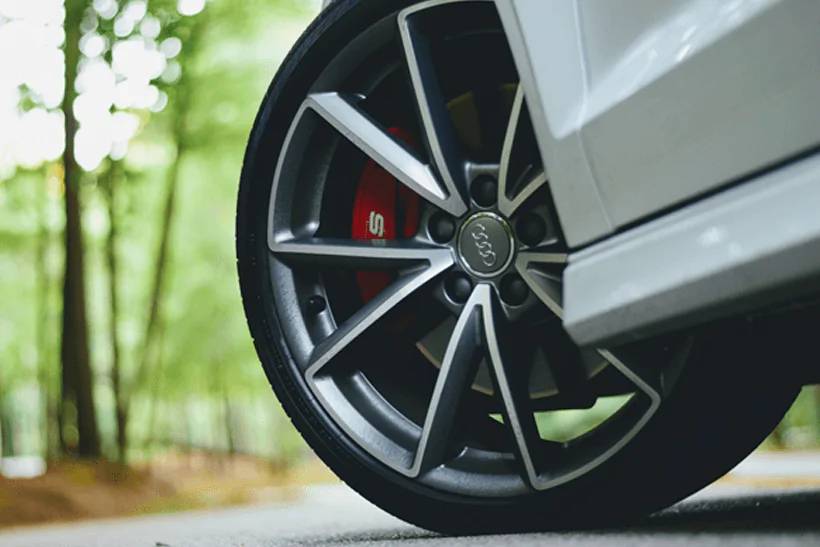
If your tyres are new, then you only need to check them once a year or every 10,000 miles. Once the tread wears down to 5mm or less, it’s sensible to check the tread each time you check the tyre pressure, which should be at least once a month.
Once your tyres drop below 3mm, you might want to start testing them every two weeks to ensure they don’t wear down below the legal limit. Once they fall beneath 2mm, it’s time to look at changing them.
How long do tyres last?
Typically, you can expect to get at least 20,000 miles out of a front tyre and 40,000 out of your rear tyres, according to the AA. But this is by no means a hard and fast rule. Exactly how fast your tyre treads will wear down depends on a number of factors:
How you drive: Sharp braking and speeding all cause tyres to wear more rapidly. Sensible driving will help to stop your tyres from wearing out faster than they should.
Mileage: The more you drive, the faster your tyres will wear down.
Wheel alignment: If the wheel's alignment is incorrect, then the tyres will wear down faster on one side. A qualified mechanic should be able to rectify this for you.
Tyre pressure: Over- or under-inflated tyres can both wear down much faster than properly inflated ones. You can learn more this in our guide to checking tyre pressure.
How you load the car: Regularly overloading your vehicle can put too much pressure on the tyres. Make sure you follow the weight limit specified by the manufacturer.
What to do if your tyres fail the check
If your tyres are nearing the legal limit — that is, under 2mm — you should make an appointment to get them replaced at the next available opportunity. If you find that your tyre tread is under the 1.6mm limit, your car is no longer legally roadworthy, meaning you could face a fine and penalty points if the police pull you over. So, you should hire a mobile tyre fitter to come out to you and replace them.
It’s easy to put off checking your tyre tread depth. But this simple test could save you a great deal of trouble and money in the long run, and it only takes a minute or two to carry out. So, make an effort to measure the tread regularly — not only will it ensure your tyres are offering the best grip and performance, but it could prevent an accident.
Visit our car advice centre to find more expert tips and advice, including how to change a tyre. Or, shop our complete range of wheel and tyre parts to find more equipment to keep your tyres in great condition.

